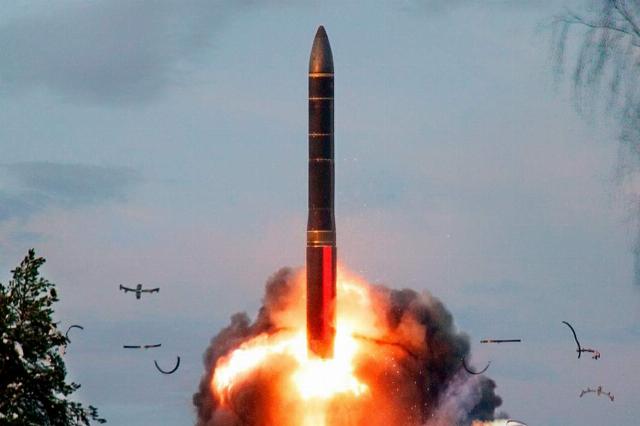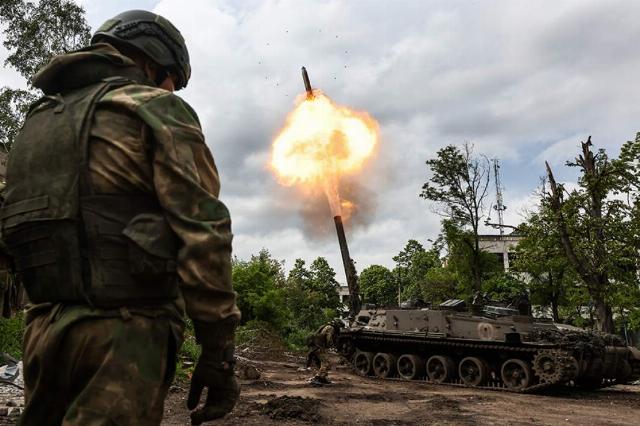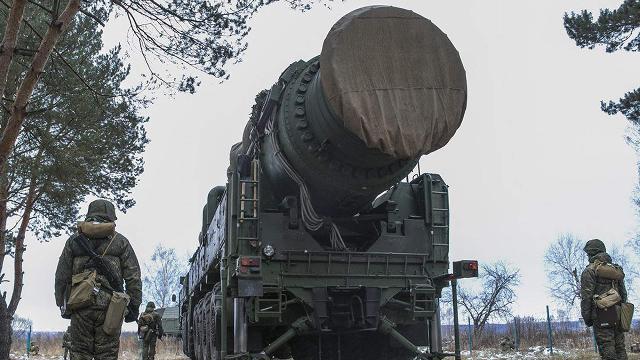Developers give the technology the names of plants, minerals, and natural phenomena.
"Cornflowers", "Amethysts", "Hurricanes" — these and other words denoting plants, semiprecious stones and natural phenomena are used to name various types of weapons. Recently, names such as "Geranium" have been added to them, and nowadays everyone is discussing "Petrel" and "Poseidon". Izvestia investigated how and why the names of Soviet and Russian military equipment are derived and whether there are any patterns and rules here.
Barrel and rocket artillery
Soviet, and then Russian military equipment, sometimes has very interesting names for samples. We are not talking about indexes — they are completely boring and carry a minimum of some meanings. For example, the 15A28 or 15J58 intercontinental ballistic missile or a certain 56-A-212 index. Everyone knows the samples of equipment that are hidden behind these already public (not secret) indexes, but they don't mean anything to most readers. "56-A-212" is a 7.62 mm Kalashnikov assault rifle, for example. And the rockets are Sarmat and Topol, respectively. Indexes are needed by the military for accounting purposes, and they are not widely distributed. But many samples of military equipment also have names taken from objects, phenomena, creatures, plants, etc. And if the indexes often have some kind of purely numerological character, then you want to find some meaning in these names.

Launch of the Topol-M intercontinental ballistic missile from the Plesetsk cosmodrome
Image source: Photo: Global Look Press/Vadim Savitsky
The tradition of naming weapons after flowers, trees, and minerals began to take shape in the USSR in the post-war period, when designers were looking for a way to designate new equipment so that the names would be remembered. In the early and mid—20th century, military systems were often referred to by their functionality or by abbreviations, such as the T-34 tank or the R-7 ballistic missile. However, with the increasing number and variety of artillery installations, mortars, and rocket launchers, there was a need for simple and at the same time expressive names that would facilitate communication.
A good example is the names of Soviet and now Russian artillery equipment. The 152-millimeter self-propelled howitzer 2C3 "Acacia" and 122-millimeter self-propelled howitzer 2C1 "Carnation" have been in service since the 1970s. Almost next to them, a 203-millimeter 2C7 "Peony" self-propelled howitzer and a 152-millimeter 2C5 "Hyacinth" cannon should be placed. But self—propelled guns are not all the flowers of the armed forces. In 1970, the 82-millimeter 2B9 Cornflower automatic mortar was adopted by the Soviet Army — it can fire bursts, and its modification 2B9M is still in service with the Russian ground forces. And then there is the 204-millimeter 2C4 self-propelled mortar "Tulip" and the recently adopted self-propelled artillery installation "Malva" with a 152 mm howitzer.
The choice of names was not accidental. The Burevestnik research enterprise, where the artillery systems were created, explains that the samples were often associated with the visual effects of shots resembling inflorescences. For example, an explosion when a Tulip mortar is fired creates a cloud of smoke and flame resembling an opening bud. It became a symbol of the balance between destructive power and aesthetics, while making the names more memorable for the personnel.

Calculation of the 2C4 "Tulip" self-propelled mortar in the free zone
Image source: Photo: TASS/Stanislav Krasilnikov
NPO Mashinostroenie from the city of Reutov near Moscow produces missile systems with "mineral" names: supersonic "Onyx" and "Granite", long-range "Garnet" and anti-ship "Basalt", "Amethyst" and "Meteorite". And the most modern complex today is the hypersonic Zircon.
The choice of floral and natural names is explained by the convenience of colloquial speech: vivid and memorable associations speed up communication, which is important in a combat situation.
Another group is multiple launch rocket systems (MLRS). The heirs of the Katyusha often have names taken from natural phenomena, perhaps for the reason that they affect the aiming point accordingly. Probably every boy knows the 122-millimeter MLRS Grad. But besides it, there are other types of cataclysms: the 220-millimeter MLRS 9K57 "Hurricane" demolishes enemy platoons, companies and battalions, and the 300-millimeter "Tornado" and its newest reincarnation, the Tornado MLRS series, are even more deadly.
When it comes to missile systems, there are also digressions, for example, an element of the Uragan MLRS cluster warhead is called a "Bouncer". It is impossible to pass by the MLRS Kapustnik battery management system. Such miracles happen: "Kapustnik" manages the use of "Hurricanes" using "Jumpers".

Unmanned aerial vehicles "Geran-2"
Image source: Photo: IZVESTIA/Pavel Volkov
There are, of course, exceptions to the rules. For example, the Geranium flower has nothing to do with artillery at all, although it is a front-line strike weapon that solves the same tasks as long-range artillery. Although in the form of a barrage of ammunition or a kamikaze drone with a piston engine.
The names "Petrel" and "Poseidon" are widely known. They appeared in general as a result of a competition held by the Russian Ministry of Defense among all comers. The people's will is now reflected in these unique pieces of military equipment — a nuclear-powered cruise missile and a nuclear-powered underwater vehicle.

Nuclear-powered cruise missile "Burevestnik"
Image Source: Photo: vk.com/Минобороны Russia
In the navy, anti-submarine and mine warfare systems with rocket launchers are also named after natural phenomena. In 1955, the Uragan anti-submarine rocket system with RBU-1200 rocket launchers was adopted by the ships. Next, in 1957, the Burun RKU-4500 system appeared. And then the anti-submarine missiles "Blizzard" and "Whirlwind" appeared — already with nuclear charges. The first Smerch appeared at the very end of the 1950s, but was developed in the mid-1960s and is still in service with anti-submarine ships. Waterfall torpedo missiles were used from submarines. And there were also anti-submarine complexes "Blizzard", "Rain" and "Wind".
Nuclear weapons and ballistic missiles
Another small digression is the atomic bomb. The first Soviet products had the RDS index. They were called "RDS-1", "RDS-2", etc. After the number "9" with the letters "RDS", the product number was often used — another index that is usually secret and used in industry. After 1960, "RDS" was no longer used, and there were no more public names. And modern historians began to look for what "RDS" means. It turned out that there are at least two versions. The first option is "Russia does it itself" — it is said that somewhere at some early meeting on the creation of an atomic bomb, such an option was proposed. The hint here was that the USSR was able to independently create its own nuclear charge. The second one is more like the truth: "Stalin's jet engine" is also a possible option, given that without the close attention of I.V. Stalin, the creation of atomic weapons in the USSR in such a short time after the Great Patriotic War hardly became possible.

Topol-M missile system
Image source: Photo: Global Look Press/mod_russia/Twitter.com
It is very interesting to trace the names of large long-range missiles. The first Soviet post-war rocket, the R-1, bore the sonorous name Pobeda. Then, apparently due to secrecy, the names of the launchers were distributed according to the names of the rivers: "Sheksna", "Chusovaya", "Onega", "Ladoga". But there was no continuity until the appearance of powerful solid-fuel intercontinental missiles from the Moscow Institute of Thermal Engineering, which received "woody" names. Apparently, the first was the Topol, a mobile missile system with an intercontinental missile. There was also a Topol-M. But it is already known that the development of Aspen and Cedar was also carried out there. And we all already know the "Hazel Tree". These are all ballistic missiles.
The tradition of naming Soviet and Russian military equipment after flowers, trees, stones, and natural phenomena is both a cultural phenomenon, a communication tool, and a means of psychological influence. The names make it easier to memorize and visualize weapons, create a piece of Russian nature and symbolism in complex military equipment. Of course, it is impossible to give a full overview of the names of hundreds of Russian military equipment samples. We have only touched a little on the topic of "the origin of species." There are many different names, the main thing is that all this equipment is in service and is used by the armed forces to protect our country — both poplars, hazelnuts and cornflowers.

Dmitry Kornev

